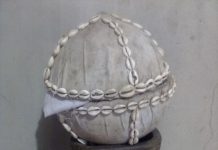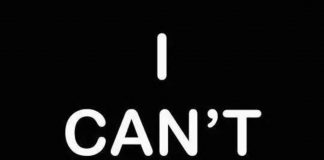Click here for previous session
Similarly, why should humankind trust its salvation to any of the gospels,
considering that they are of unknown origin and authorship?
The Jesus Seminar is perhaps one of the most objective and sincere attempts of an
ecumenical council of Christian scholars to determine the authenticity of the recorded
acts and sayings of Jesus. Yet their methodology involves casting votes! Two thousand
years after the ministry of Jesus, nearly two hundred scholars are formulating a collective
Christian opinion regarding the reliability of the quotes and historical reports of Jesus by
casting colored beads. For example, as regards the reported words of Jesus, the
definitions of the bead colors are as follows:
Red—Jesus said it or something very close to it. Pink—Jesus
probably said something like it, although his words have suffered in
transmission. Gray—these are not his words, but the ideas are close to his
own. Black—Jesus did not say it; the words represent the Christian
community or a later point of view. 151
Other Christian committees have attempted to authenticate Bible texts by similar
methodologies. The editors of the United Bible Societies’ The Greek New Testament:
Second Edition are alphabetically minded:
By means of the letters A, B, C, and D, enclosed within “braces”
{} at the beginning of each set of textual variants the Committee has
sought to indicate the relative degree of certainty, arrived at the basis of internal considerations as well as of external evidence, for the reading
adopted as the text. The letter A signifies that the text is virtually certain,
while B indicates that there is some degree of doubt. The letter C means
that there is a considerable degree of doubt whether the text of the
apparatus contains the superior reading, while D shows that there is a very
high degree of doubt concerning the reading selected for the text. 152
Bruce M. Metzger describes using similar methodology in his A Textual
Commentary on the Greek New Testament. “In fact,” he writes, “among the {D}
decisions sometimes none of the variant readings commended itself as original, and
therefore the only recourse was to print the least unsatisfactory reading.”153
Now doesn’t that give us a warm, secure feeling in trusting the Bible with the
salvation of mankind?
But I digress. The point is that these ranking systems are probably about the best
possible, given the limitations of the biblical record, but what a sad comment that is!
Compared to the exquisitely refined system of hadith authentication, these coloredbead
and ABCD classification systems are a bit wanting, to say the least.
The historical record keeping is relevant, for when a person hears a story—even a
believable story at that—the first question is usually “Where did you hear that?” Any
reasonable set of historical standards includes the identification and verification of sources. The Holy Qur’an and many hadith traditions satisfy the highest degrees of
authentication. But the majority of Bible verses don’t.*
How does this relate to the issue at hand? Simple. The miracles that occurred
through Muhammad are no less numerous or impressive than those of Jesus, and are
witnessed by an unimpeachable historical record that puts all others of similar time
period to shame. So just as the miracles of Moses, Elisha, and Muhammad don’t imply
divinity, neither do those of Jesus.
Let’s look at a few examples:
Jesus fed thousands with a few fish and loaves of bread. But Elisha fed
a hundred people with twenty barley loaves and a few ears of corn (2 Kings 4:44);
granted a widow such an abundant flow of oil from a jar that she was able to pay
off her debts, save her sons from slavery, and live on the profits (2 Kings 4:17);
and gave increase to a handful of flour and spot of oil such that he, a widow and
her son had enough to eat for many days, after which “The bin of flour was not
used up, nor did the jar of oil run dry …” (1 Kings 17:1016). So what does that
make Elisha? The historical record of Muhammad feeding the masses with a
handful of dates on one occasion, a pot of milk on another, and enough meat for a
small party on still another are equally miraculous. Likewise are the stories of his
watering the masses (1,500 people on one occasion) from a single bowl of water.
Yet no Muslim claims divinity for Muhammad.
Jesus healed the lepers. Likewise, Elisha healed Naaman (2 Kings 5:7
14). For that matter, the disciples were bidden to such service in Matthew 10:8. What does that make them?
Jesus cured a blind man. Elisha not only struck his enemies blind, but
restored vision to the blind through prayer (2 Kings 6:1720). Muhammad
reportedly cured blindness through prayer as well.
Jesus raised the dead. Once again, Elisha beat him to it, having raised
two children from the dead (1 Kings 17:22 and 2 Kings 4:34). Furthermore, the
disciples were bidden to raise the dead (Matthew 10:8). So once again, what does
that make them?
Jesus walked on water. Had he been around in the time of Moses, he
wouldn’t have had to.
Jesus cast out devils. So did his disciples (Matthew 10:8). So did the sons
of the Pharisees (Matthew 12:27 and Luke 11:19). So, for that matter, do the
wayward followers whom Jesus will reportedly disown (see Matthew 7:22)—a
disconcerting thought considering how many priests and ministers perform such
theatrics, even if real.
So if we seek evidence of Jesus being divine, we are forced to look beyond
miracles.






